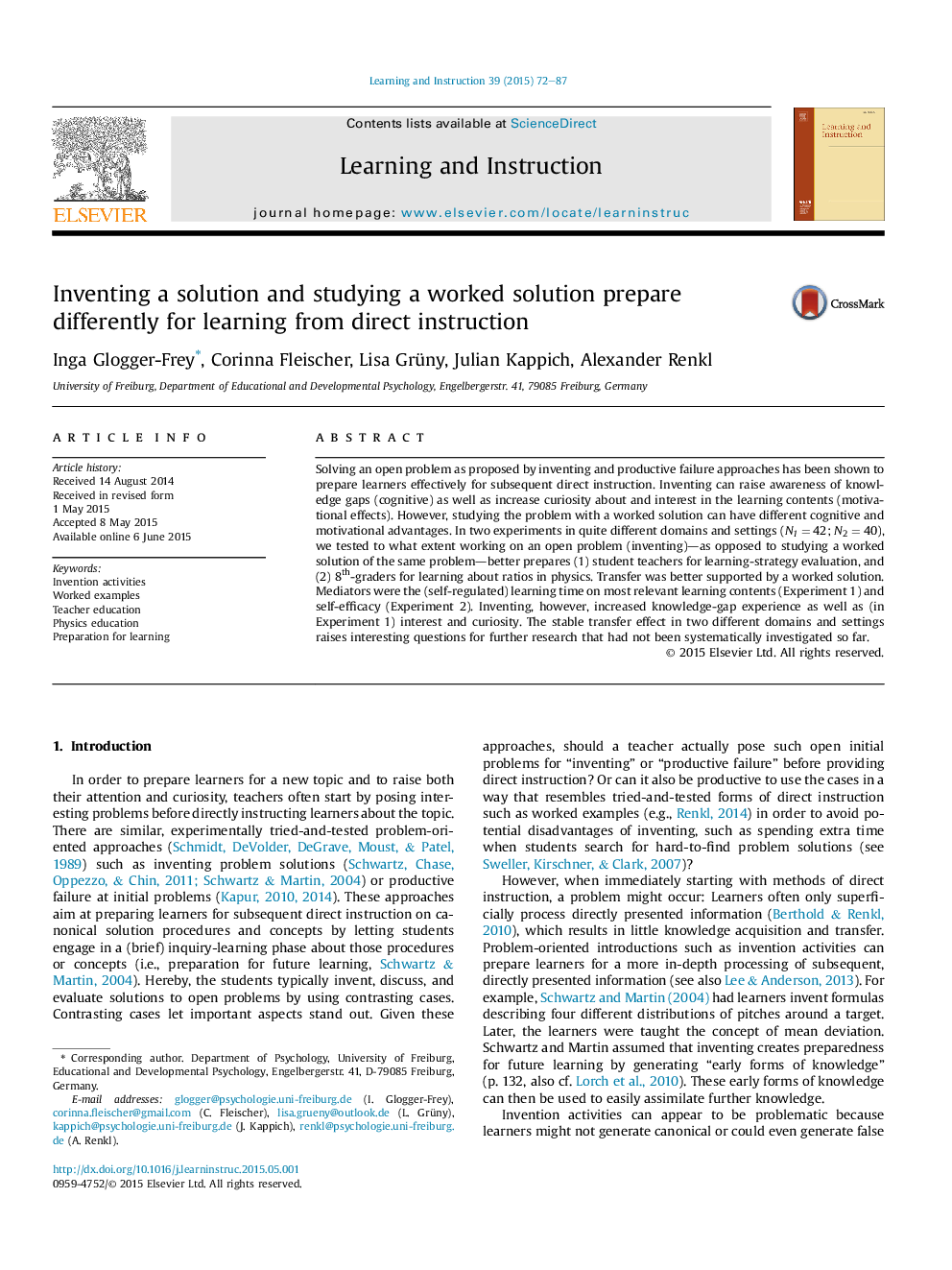| Article ID | Journal | Published Year | Pages | File Type |
|---|---|---|---|---|
| 365504 | Learning and Instruction | 2015 | 16 Pages |
•We found differential effects for two preparation-for-future-learning activities.•A worked solution enhanced transfer in two different domains.•Mediators for transfer were the (self-regulated) learning time and self-efficacy.•Inventing increased knowledge-gap experience, partly interest and curiosity.
Solving an open problem as proposed by inventing and productive failure approaches has been shown to prepare learners effectively for subsequent direct instruction. Inventing can raise awareness of knowledge gaps (cognitive) as well as increase curiosity about and interest in the learning contents (motivational effects). However, studying the problem with a worked solution can have different cognitive and motivational advantages. In two experiments in quite different domains and settings (N1 = 42; N2 = 40), we tested to what extent working on an open problem (inventing)—as opposed to studying a worked solution of the same problem—better prepares (1) student teachers for learning-strategy evaluation, and (2) 8th-graders for learning about ratios in physics. Transfer was better supported by a worked solution. Mediators were the (self-regulated) learning time on most relevant learning contents (Experiment 1) and self-efficacy (Experiment 2). Inventing, however, increased knowledge-gap experience as well as (in Experiment 1) interest and curiosity. The stable transfer effect in two different domains and settings raises interesting questions for further research that had not been systematically investigated so far.
